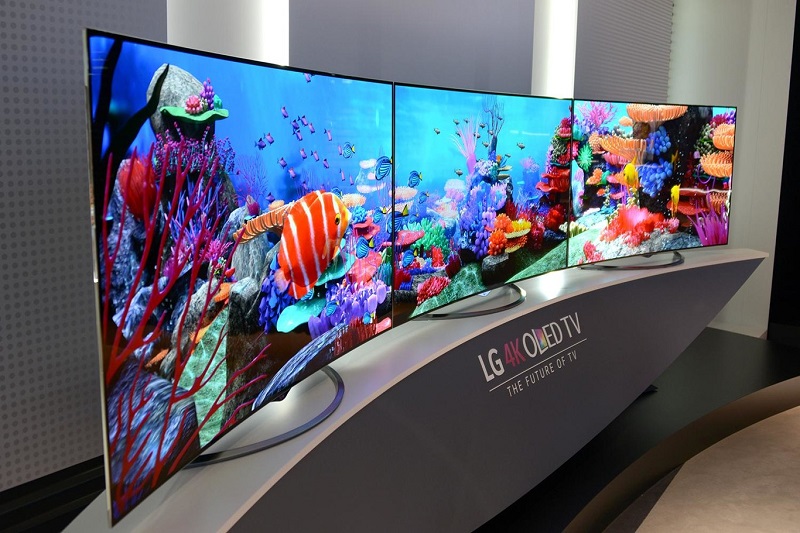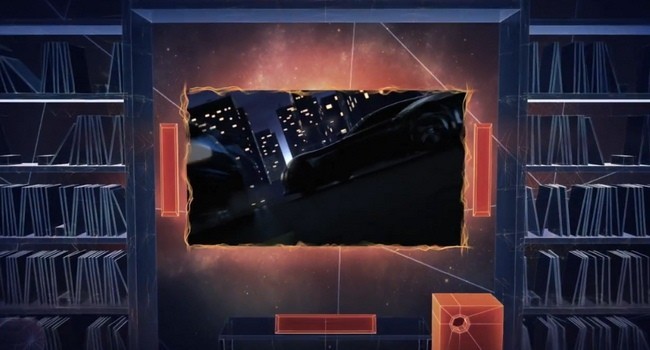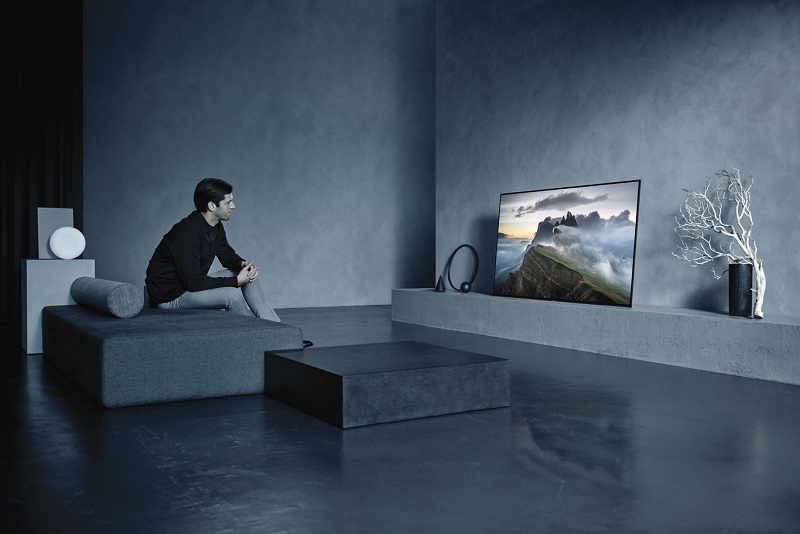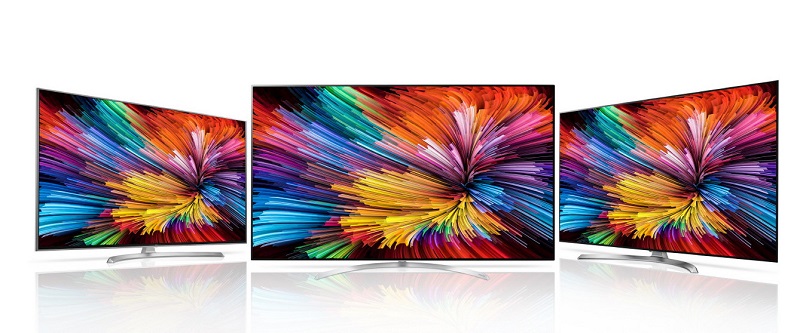Buying a new TV is not something we should take lightly. Usually it usually represents an important expense for the domestic economy and the device, as a rule, will have to last a few years maintaining its functionality. A couple of decades ago this last point was not very problematic, since the technological changes produced each year were minimal.
However, at present, every few months we are witnessing new advances that make the wonders previously announced obsolete. How to buy a TV that is not outdated in a short time? What do I have to fix? What characteristics does it have to have for me to last a few years?
These are difficult questions to answer given the tremendous changes in services and features, especially now that we are at the turning point of various technologies. However, we can reflect on several key aspects that we must consider well before commissioning our new model.
Panel technology and type

The first point to take into account and perhaps one of the most complex when deciding is the technology related to the panel of the television, which goes beyond the resolution of the same ( UHD in most cases, since manufacturers no longer give us a choice). Currently there are basically two trends: LED backlit LCD (and its derivatives as Samsung QLED) and OLED. Both are complementary and are focused on very different audiences and types of use.
OLED (Organic Light-Emitting Diode) is the newest one on the market, it does not use backlight systems on the back of the panel as an LCD, but is able to turn the pixels on and off individually, which translates into blacks much purer and realistic with a better level of contrast and colors that stand out more on the screen.
It also has higher viewing angles without loss of quality, no ghosting effect or residual background lights providing a perfect image from any point where we watch TV, both horizontally and vertically. However, it has several important problems that have not yet been fully resolved. For starters, we have the issue of so-called “retention or burnt” image similar to the old plasma models.
In theory, new equipment controls this problem relatively well, but still it is not advisable to leave still images on the screen for a long time. Therefore, if we are going to use TV as a computer monitor frequently, to have the web browser open, to watch channels with large and luminous logos, let the children play the console for hours, etc. OLED is not for us.
The other big problem is related to the degradation of light emitters, which varies depending on the color and do not have a life as large as in the case of LCD, so it is not recommended OLED if we are going to have the TV on many hours a day (I’d say more than 4-6 hours a day).
So, what technology do I choose if I want my TV not to be outdated or spoiled in a few years? Well it depends on the use that we are going to give it. For starters, if we want less than 55 inches then we forget OLED, since they are not made with less than that size. If we want 55 or more inches and we will use the TV less than 4 or 6 hours a day mainly to watch movies and series, to throw an occasional game to the console and to see some channel of DTT, then we can bet by OLED.
Otherwise, if the TV is the workhorse of our home, it will always be on(more than 6-8 hours a day), we will see a lot of DTT channels with logos and static images, we will use it to play the console or as a computer monitor, then we should bet on LCD with LED lighting. In case the subject of the angles of vision concern us and we need to be a little broader, we can make the leap to Samsung QLED models, although they are quite more expensive than the average.
HDR and its multiple versions

After the jump to the UHD resolution, for many the High Dynamic Range or HDR has been the real improvement in the televisions that really is contributing higher quality in the images. Its objective is to reproduce a wider range of luminance generating more levels of intensity between the darker and clearer areas of an image giving us a greater level of detail.
In theory it is capable of providing blacker blacks with brighter targets at the same time, that is, without interfering with each other. The problem is that, as is often the case in other technological areas, it has not been born as a single standard, but there are four different versions that we have to look for in the specifications of our new TV if we do not want to be obsolete, or we can extract the maximum content in the next years.
The first two contenders are HDR10 and Dolby Vision. The first is an open standard that is supported by UHD certification and can be used on all UHD HDR televisions and UHD Blu-ray players. Dolby Vision, on the other hand, is a proprietary format of Dolby Laboratories more demanding at the hardware level and, for the moment, only in some makes and models, such as LG’s OLED.
The biggest difference between the two is given by the color depth and the maximum brightness supported by the panel. Thus, while in Dolby Vision we speak of 12-bit color, in HDR10 the figure drops to 10 bits. In this way Dolby Vision has 4096 possible RGB values compared to the 1024 values for HDR10. As for brightness, Dolby Vision supports a theoretical maximum of up to 10000 nits (which in practice stand at 4000 due to the limitations of the displays), compared to the 1000 nits offered by the HDR10.
The third format in discord High Dynamic Range is HLG or Hybrid Log-Gamma, whose mission is to bring the HDR television broadcasts terrestrial, cable and satellite. The fundamental difference from its predecessors is that it is intended to transport the same signal in a conventional HDR video without an extra layer of more information in the appropriate receptors will be performed to generate the desired video with high dynamic range.
Finally, a few months ago a new contender came out of the hands of Samsung and Amazon , who announced a new version of the HDR10 that they have christened the same name and adding the “+” symbol, i.e. as HDR10 +. It is a new iteration that incorporates the so-called Dynamic Tone Mapping or, what is the same, dynamic metadata that tells the television how to use the HDR scene by scene or even frame by frame, instead of encoding the data in a general way for the whole movie.
It is a function that, theoretically, was supported by the proprietary Dolby Vision model and now Samsung wants to take the open model with HDR10 +. In fact, the brand has announced that its televisions of 2017 will support the new standard from the beginning and 2016 will do so through an update. What the rest of the brands will do is still unknown. Ideally, our new TV will support the four versions, but if not, at least HDR10 direct (this is usually supported most) and if possible Dolby Vision, although currently there are almost no compatible content.
You may also like to read: Size and space in the room – TV Buying Guide
Connectivity

A point to keep in mind regarding the use of the television in the next few years is related to its wired and wireless connectivity. The 4K contents will become more and more common and is no longer enough with 100 Mbps network connections and wireless with WiFi N. We have to try that the Ethernet ports, if it has them, are Gigabit and WiFi connections type AC.
If we are going to use the mobile to play musical contents or external sound systems, we will also need a Bluetooth connection and at least an optical port for sound bars, AV receivers, etc. There is also a digital coaxial output, analog RCA and HDMI ARC (HDMI Audio Return Channel), which allows us to play the sound of our TV in a home theater system only and exclusively through the HDMI connection.
But the most important thing in order not to be obsolete is that we have as many HDMI 2.x connections as possible, compatible with the HDCP 2.2 copy protection system. The most powerful current version is HDMI 2.0b, which will ensure the support for new HDR technologies, 4K content at 60fps with an 18Gbps bandwidth and the ability to handle up to 32 audio channels.
However, this year has already presented the new version HDMI 2.1 that brings important improvements in terms of speed and functionality is concerned. For example, you will be able to increase your bandwidth up to 48 Gbps and deal with video up to 8K at 60 Hz or 4K at 120 Hz. It will also support variable image refresh technologies to synchronize frame rate with devices and prevent tearing.
The problem is that it will not reach televisions, players, consoles like the new Xbox One X and cables, because it will be necessary to buy new special cables, until the end of 2017 or early 2018, so we will have to wait a few more months if we want be the latest in connectivity for a long season.
Finally, we must not forget to be well served USB ports, if they can be 3.0 better still for 4K content, and make sure that our TV can decode the most common audio and video formats so that you do not have to rely on an external player, although at the rate that these formats change this is a point that sooner or later will be outdated.
Smart TV Platform

The manufacturers sell us their Smart TV platforms as one of the key points of the new TVs, with access to multiple services, simple menus that move quickly, voice control, games, infinite possibilities of configuration …
They stand out for example WebOS in the models of LG, Tizen in Samsung and, above all, Android TV in brands like Sony with a wider range of applications ready to download and install. However, we should not rely on it, since the TV is a device with a life span that usually exceeds 5-10 years, so probably any current platform will become obsolete sooner or later.
Anyway we have to make sure that we at least have access to the most current streaming services, such as Netflix or YouTube and verify that the movement and navigation through the applications and menus is fluid, without breaks or slowdowns, as it is something with which we will have to live together for years.
At this point, medium-high-range TVs often offer better performance than the cheaper ones, as the internal hardware is more powerful. However, do not be obsessed with having one or another smart TV platform. In the end all are similar (with their differences, of course, but very similar) and if in a few years they are outdated with regard to access to services, we can always resort to an external receiver, a multimedia center, or HDMI pincho to upgrade.
Sound system

It is one of the points that has evolved the least in recent years. What’s more, since the appearance of increasingly thin TVs has involute away from the television in favor of external equipment such as sound bars. The trend seems to continue this way in the next few years, despite the latest releases that focus on integrating the sound directly into the panel.
This is the case for example the new Sony OLED TV or LG panels that emit the sound from the screen. But let’s not fool ourselves, unless there is some spectacular discovery in sound science in the coming years, even these technologies will still need an additional subwoofer to supplement the low frequencies.
That is why an increasingly frequent option is to consider the TV speakers as an auxiliary sound system valid for everyday use of DTT or series that should be complemented by a sound bar or AV receiver when viewing movies of higher category. And the surround sound formats that are coming to the new, more expensive teles like Dolby Atmos?
Well, do not be obsessed with this, as extracting surround audio from the poor speakers integrated into a TV is little more than a utopia, even if accompanied by a sound bar. Is the TV compatible with Dolby Atmos and DTS: X? Great, but if not, nothing happens, since they are formats intended for complete home theater systems consisting of an AV receiver plus 7, 9 or 11 speakers installed by walls and ceilings and not to be heard from a single source as the television.



